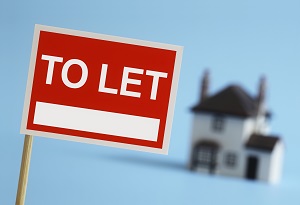Buy-to-let mortgages explained

Mike Naylor, personal finance expert and author of the upcoming Rough Guide to Property (sponsored by Legal & General), explains buy-to-let mortgages and how they work.
In September, the Council of Mortgage Lenders reported that buy-to-let lending rose sharply in July, increasing both month-on-month and year-on-year by volume and by value for the third consecutive month in a row*. Buy-to-let lending has become increasingly popular in recent years as the buy-to-let housing market has grown.
If you’re considering a buy-to-let mortgage, here’s what you need to know.
Applying for a buy-to-let mortgage
When you apply for a buy-to-let mortgage you will need to supply the lender with both the details of your income and the amount the property will be rented out for.
Normally the expected rent has to be at least 25% more than the monthly mortgage repayment. This means, for example, that if your mortgage payment is £500 per month then the property should be rented for at least £625 per month (£500 x 1.25).
Don’t ever try to obtain a standard residential mortgage for a property that you intend to rent out. This counts as fraud and could land you with a custodial sentence and cause problems if you ever need a mortgage in the future.
Deposits
A typical deposit is at least 25% and fees tend to be higher than residential mortgages. It is also normal that your monthly repayments only pay off the interest and not the capital, in which case at the end of the mortgage you will still owe the amount you borrowed (less any overpayments you might have made).
Income tax
The income you get from a buy-to-let property is taxable and you need to declare it on a self-assessment tax return. Income Tax is charged at 20%, 40% or 45% depending on your income. You can reduce the income you get from buy-to-let by taking off some “allowable expenses”, such as the cost of repairs and maintenance, interest on buy-to-let mortgages, and buildings insurance premiums
In order to pay less income tax on your investment, you can reduce your income by the amount of your monthly mortgage repayments. From 2017 the rules are changing so that landlords won’t be able to reduce their income from property by the full amount of interest they pay on buy-to-let mortgages. From 2020 only the basic rate of tax will be deductable. For more information about tax on buy-to-let incomes, visit https://www.gov.uk/renting-out-a-property/paying-tax
Stephen Smith, Director of Mortgage Club and Housing at Legal & General said:
“Last year buy-to-let lending reached a total of £27.4 billion, up 32% from the previous year**. There’s clearly an appetite for the market and plenty of options for people looking to secure the capital needed to invest in buy-to-let properties. However, with the latest Budget announcement and income tax changes coming into effect, potential landlords and investors need to be conscious of how the changes impact them and their ability to repay their mortgage, while maintaining a strong investment.”
For more information on buy-to-let and making your property work for you, subscribe to the Rough Guide to Personal Finance series to receive the free Rough Guide to Property, to be released this November roughguidefinance.com


